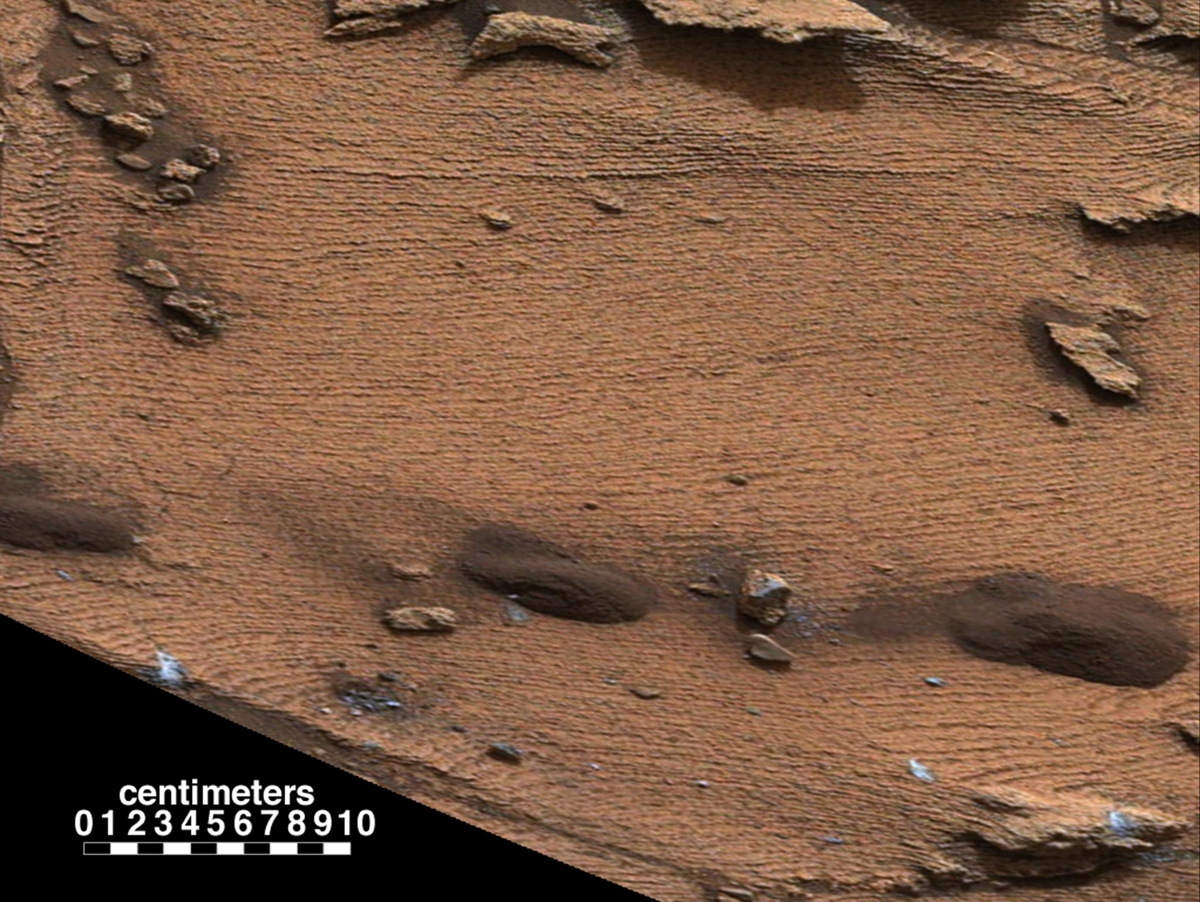
Ancient Mars featured flowing rivers and sizable lakes — but that doesn't mean the Red Planet definitely could have supported life, one prominent researcher stresses.
The presence of liquid water is just one of many factors that researchers need to take into account when investigating the past or present habitability of Mars or any other cosmic body, astrobiologist and mineralogist Pamela Conrad wrote in a "Perspectives" piece published online today (Dec. 11) in the journal Science.
"The things that make a place livable are numerous, and sometimes, there's a showstopper you didn't think of," Conrad, deputy principal investigator for the Sample Analysis at Mars instrument aboard NASA's Curiosity rover, told Space.com. "So it's important to take a poll of the diversity of attributes that could contribute to making an environment livable or not." [Ancient Mars Could Have Supported Life: Photos]
While modern Mars lacks these characteristics, it possessed both of them about 4 billion years ago. A thorough understanding of Martian habitability would seek to determine whether the magnetic field, thick atmosphere and liquid water all occurred simultaneously, said Conrad, who's based at NASA's Goddard Space Flight Center in Greenbelt, Maryland.
"It is a matter of timing: The emergence and sustenance of both life and its habitat require a convergence of the right chemicals and physical conditions in the right place at the same time," she wrote in Science.
Assessing the physical conditions that prevailed in the distant past is challenging but not impossible, Conrad said. For example, NASA's MAVEN spacecraft (short for Mars Atmosphere and Volatile Evolution) is currently studying the rate at which gas is escaping from the Martian atmosphere, gathering data that should allow researchers to extrapolate this process backward in time.
Conrad stressed that she's not trying to throw cold water on the Curiosity rover's recent discoveries, which suggest that Mars could have supported microbial life billions of years ago. Indeed, she's a Curiosity team member and played a key role in analyzing and interpreting the rover's results.
Get the Space.com Newsletter
Breaking space news, the latest updates on rocket launches, skywatching events and more!
Rather, she just wants to make sure that scientists keep their eyes open.
"I think it's very important for us to bring every argument to the table when you have a complex problem under discussion," she told Space.com. "It's very dangerous to make assumptions in such definitive terms, because there could be a 'gotcha.'"
It makes sense for habitability discussions and research to focus on Mars, which is close to Earth and looms as a target for human exploration down the road, Conrad said. But Mars also serves as a laboratory of sorts, she added.
"Everything we learn about Mars is a lesson in how to learn about other planets, and those lessons are key to enabling us to explore them," Conrad said.
Follow Mike Wall on Twitter @michaeldwall and Google+. Follow us @Spacedotcom, Facebook or Google+. Originally published on Space.com.
Join our Space Forums to keep talking space on the latest missions, night sky and more! And if you have a news tip, correction or comment, let us know at: community@space.com.

Michael Wall is a Senior Space Writer with Space.com and joined the team in 2010. He primarily covers exoplanets, spaceflight and military space, but has been known to dabble in the space art beat. His book about the search for alien life, "Out There," was published on Nov. 13, 2018. Before becoming a science writer, Michael worked as a herpetologist and wildlife biologist. He has a Ph.D. in evolutionary biology from the University of Sydney, Australia, a bachelor's degree from the University of Arizona, and a graduate certificate in science writing from the University of California, Santa Cruz. To find out what his latest project is, you can follow Michael on Twitter.









